 |
|
|

Статья: Discovery by Reconstruction: Exploring Digital Archeology
Авторы: Olsen, S., Brickman, A., Cai, Y.
Olsen, S., Brickman, A., Cai, Y. Discovery by Reconstruction: Exploring Digital Archeology; [Электронный ресурс]. Систем. требования: Adobe Acrobat Reader. - URL: http://www.andrew.cmu.edu/course/60-427/aisd/Museum.pdf (дата обращения: 10.02.2011).
Index Terms — digital archaeology
Аннотация:
With a case study of the digital reconstruction of a village 5,000 years ago, the authors revealed the discovery process behind the scene, such as inverse physics process with decision-making and analogies. It is found that digital reconstruction enhances the understanding of archeological details, spatial relationship, and cross-referencing with field data. We found that digital technologies can bring archeology to a new era where it not only can assist archeologists for scientific discovery but it can also enrich the presentation of findings and enable the distributed scientific communication and discovery.

Книга: Beyond illustration : 2d and 3d digital technologies as tools for discovery in archaeology
Авторы: Frischer, B., Dakouri-Hild, A.
Beyond illustration : 2d and 3d digital technologies as tools for discovery in archaeology / edited by Bernard Frischer, Anastasia Dakouri-Hild. Frischer, Bernard, Dakouri-Hild, Anastasia Oxford: Archaeopress, 2008. [Электронный ресурс]. Систем. требования: Adobe Acrobat Reader. - URL: http://archive1.village.virginia.edu/spw4s/Beyond/BAR/BeyondIllustration_final.pdf (дата обращения: 10.02.2011).
Index Terms — digital archaeology, archaeology
Аннотация:
This book is timely. As the following articles show, 2D and 3D modeling of cultural heritage is no longer used just to illustrate the location and appearance (past or present) of archaeological sites, but also as a tool to discover and recover data from archaeological remains. We have better ways of predicting where this data might be found under the surface (see Gerlach et al., de Boer et al.). When applied to the legacy excavation data of a cultural heritage site—as Lieberwirth does in a pioneering study in this volume—or when used to record the progress of a new excavation, 3D modeling has the potential to mitigate the irreversible and destructive nature of archaeological excavation, an unfortunate, ironic, and unavoidable central fact of archaeology as traditionally practiced. Up to now we have had, perforce, to murder to dissect. With the widespread adoption of 3D technologies to record and reconstruct archaeological sites, we can virtually preserve the site through 3D data capture as we dig it up. And, once we model the 3D data gathered in the field, we can allow our colleagues to retrace our decisions and to test the validity of our conclusions with more precision and confidence.This application of 2D and 3D digital tools in archaeology is not surprising. 2D and 3D models of cultural monuments permit us to visualize their use and evolution from inception through their latest phase. As neurobiologist Semir Zeki has emphasized, vision rarely involves mere sensation; it usually leads spontaneously to cognition as well. First we look, then we see and understand (Zeki 2003: 21, 24, 26, 93).
A classic instance is Mendeleev’s table of elements, whose power ‘was not just that it functioned as a tool for arranging properties but that the gaps in the sequences predicted the discovery of yet unknown elements’.4 A second famous case concerns John Snow’s solution of the cause of an outbreak of cholera in London in 1854. By displaying all the cases on a map marked with streets and public water pumps, Snow was able to establish the likelihood that the disease had spread through water contamination at a specific pump. Its handle was removed, and the epidemic promptly ended (Tufte 1997: 27-37).
According to information scientist Colin Ware, a visualization can promote understanding in the following five ways:
-It may facilitate the cognition of large amounts of data
-It can promote the perception of unanticipated emergent properties
-It sometimes highlights problems in data quality
-It makes clear the relationship of large-and small-scale features
-It helps us to formulate hypotheses (Ware 2004)
The role of visualization in cognition has not yet become a major theme in discussions of 2D and 3D archaeological models. This is undoubtedly a normal case of theory-lag: since most uses of computer modeling have been for purposes of illustration, it is not surprising that theoreticians should have stressed this application. The field into which 2D and 3D modeling falls was aptly called ‘virtual archaeology’ by P. Reilly in 1990 (see Reilly 1991; Forte and Silotti 1995; Earl 2006). Reilly defined virtual archaeology’s mission as ‘enrich[ing] the perception of the material under study” (Reilly 1989), and “offer[ing]…the most faithful re-presentation of the ancient world possible: highly realistic in information and with a high scientific content’ (Forte and Silotti 1997: 10). In support of this mission, theoreticians of the new field focused on such matters as what software should be used to create or view a 2D or 3D model; viewshed analysis using standard GIS tools; how uncertainty or degrees of probability should be represented; and how 3D models could be used to improve interpretation in museums, in virtual museums, and in the classroom.
...This historical sketch brings us to the present day and allows us to take stock of not only of which of Ware’s five applications of visualization archaeologists have clearly already embraced, but also to see those that still remain to be employed, at least on a large scale, in our field. Clearly, these are the second and fifth types: promoting the perception of emergent properties; and facilitating the formation of hypotheses. This type of work does more than illustrate an archaeological monument. It helps us to respond to the often tacit assumption that 2D and 3D modeling is primarily for teaching and has little, if anything, to contribute to scholarship (cf. Kolb 1997; Earl 2006: 192-193). It also allows us to use the computer model as a research tool to generate new knowledge. The purpose of this book is to collect some of the pioneering efforts in this promising field.
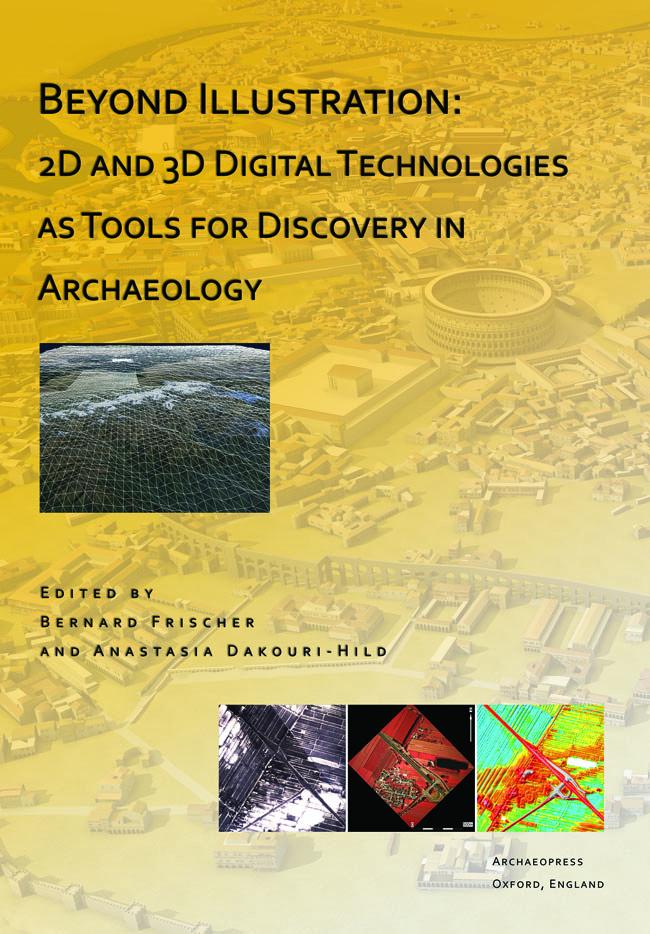
Статья: Applications and pitfalls of ct-based 3-d imaging of hominid fossils
Авторы: Zonneveld, F.W.
Zonneveld, F.W. Applications and pitfalls of ct-based 3-d imaging of hominid fossils // Three-Dimensional Imaging in Paleoanthropology and Prehistoric Archaeology Acts of the XIVth UISPP Congress, University of Liege, Belgium, 2-8 September 2001, Colloque / Symposium 1.7 edited by Bertrand Mafart and Herve Delingette. [Электронный ресурс]. Систем. требования: Adobe Acrobat Reader. - URL: http://foveaproject.free.fr/BAR.0901.zonneveld.pdf (дата обращения: 10.02.2011).
Index Terms — tomography, virtual paleoanthropology, 3-d imaging of hominid fossils, Prehistoric Archaeology Acts
Аннотация:
The advent of high-resolution medical computed tomography, became possible to visualize the internal structures of hominid fossils, to obtain 3D-images. The author review five common technical pitfalls that may adversely influence the cross-sectional CT and 3Dimages reconstructed. He explains the different solutions for each problem. Then, he present some example of applications of CT-based 3D imaging in paleoanthropology as disarticulation of the different constituents of a fossil, most commonly bone and matrix, quantitative analysis, reconstruction of fossils in a computer using both internal and external landmarks and techniques such as mirror imaging for filling in missing parts, use of segmented 3-D data sets to physical models for visual inspection, teaching create.
Книга: Prospects and pitfalls. In: W. Henke and I. Tattersall (eds.), Handbook of Paleoanthropology
Авторы: Hublin, J.-J.
Hublin, J.-J. (2007). Prospects and pitfalls. In: W. Henke and I. Tattersall (eds.), Handbook of Paleoanthropology, Vol. 1. Principles, Methods, and Approaches. Springer-Verlag, Berlin and Heidelberg, pp. 815 - 829 [Электронный ресурс]. URL: Google books (дата обращения: 10.02.2011).
Index Terms — tomography, virtual paleoanthropology, 3-d reconstruction
Аннотация:
Применение трёхмерных технологий палеоантрополагами в научных исследованиях началось практически одновременно с археологами. Так, в середине 1980-х гг. компьютерные программы начинают постепенно внедряться в сферу науки первоначально как инструменты анализа изображений, в последствии появившиеся трёхмерные программы, лазерные сканеры производят, по словам профессора Института эволюционной антропологии общества Макса Планка Jean-Jacques Hublin «революцию в области палеонтологии человека и физической антропологии положив, начало тому, что обычно стали называть «виртуальной палеоантропологией». Среди исследований в области палеоантропологии стоит работы учёных Zonneveld F.W. и Wind J. 1994 г. ознаменовался выходом в свет статьи C. Baldock, S.W. Hughes, и D.K. Whittaker «3D реконструкция древних египетских мумий с примене-нием компьютерной ренгено-томографии» .
Как и археологи палеоантропологии активно развивали идею построения трёхмерных моделей исследуемых объектов - виртуальных копий. Так в своей работе профессор Jean-Jacques Hublin , анализируя опыт своих предшественников отметил следующий перечень возможностей изучения образцов посредством применения трёхмерных технологий:
- виртуальная очистка и реконструкция (включая коррекцию пластических деформаций) (Kalvin et al. 1992 ; Zollikofer et al. 1995 ; Ponce de Leon and Zollikofer 1999 );
- точный количественный анализ недоступной прямому наблюдению внутренней структуры (включая тонкие структуры, такие как среднее и внутреннее ухо, тонкие костные пластинки, сосудистые отверстия и т.д.) и их сравнение с живыми аналогами (Zonneveld et al. 1989 ; Hublin et al. 1996 ; Spoor et al. 1996 );
- трёхмерный морфометрический анализ, включая разработку новых математических инструментов;
- моделирование процессов онтогенеза, биомеханических свойств, и собственно эволюционных изменений (Ponce de Leon and Zollikofer 2001 ; Mitteroecker et al. 2004 )
Книга: Учение о перспективе
Авторы: Шмидт Р.
Шмидт Р. Учение о перспективе / Пер. с нем. А.П. Соловьёва; Под ред. Р.И. Гольцевой - М.: Стройиздат, 1983. - 120 с. [Электронный ресурс]. Систем. требования: Adobe Acrobat Reader. - URL: http://hist.msu.ru/Departments/Inf/3D/Article/Shmidt.pdf (дата обращения: 10.02.2011).
Index Terms — фотограмметрия, перспектива, анализ пространства, деление дистанции, анализ фотографий, реконструкция изображений
Аннотация:
В книге специалистов ФРГ методически и целенаправленно излагаются внутренние взаимосвязи и принципы практического применения пространственного представления, пространственный анализ. Построения разных видов даются на примерах, поэтапно. Приведено построение современных объектов и перспективное построение изображений. Одна из ценнейших методик, описанных автором Шмидтом Р., является метод восстановления размеров изображения по фотографии, что немаловажно для решения задачи построения виртуальной исторической реконструкции несохранившегося памятника историко-культурного наследия, по которому источниковая база ограничивается только наличием ряда фотографий или когда источниковая база не полная.
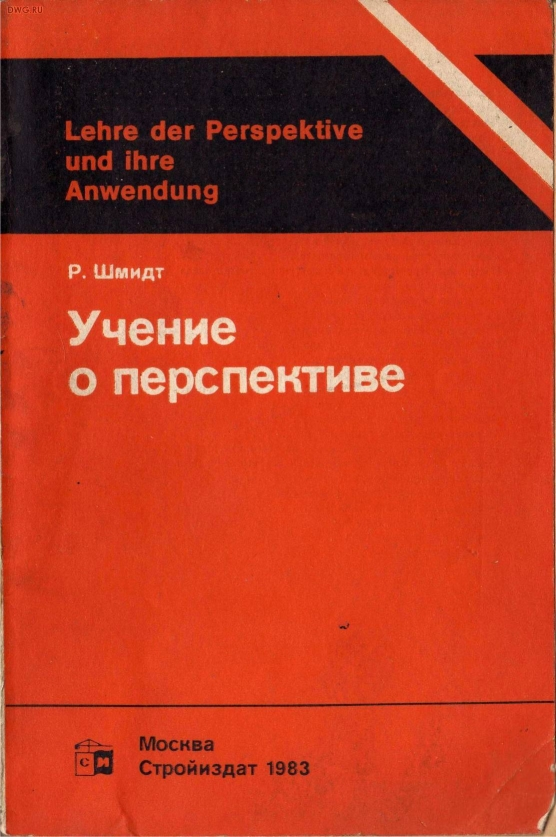
Книга: Archaeology and the Information Age a global perspective
Авторы: Paul Reilly, Sebastian Rahtz
Reilly P., Rahtz S. Archaeology and the Information Age a global perspective / edited by Reilly P. London Routledge, 1992 by Routledge / edited by Bernard Frischer, Anastasia Dakouri-Hild. Frischer, Bernard, Dakouri-Hild, Anastasia Oxford: Archaeopress, 2008 - 242 p.
Index Terms — digital archaeology, archaeology
Аннотация:
This book is the first in the One World Archaeology series to derive from the Second World Archaeological Congress (WAC
2), held in Barquisimeto, Venezuela, in September 1990. Despite many organizational problems (Fforde 1991, p. 6), over 600
people attended the Inaugural Session of WAC 2, with more than 450 participants from 35 countries taking part in academic
sessions, and additional contributions being read on behalf of many others who were unable to attend in person.
True to the aims and spirit of WAC 1 over three quarters of the participants came from the so-called Third and Fourth
Worlds (see Fforde 1991, p. 7 for details) and the academics came not only from archaeology and anthropology but from a
host of related disciplines.
WAC 2 continued the tradition of effectively addressing world archaeology in its widest sense. Central to a world
archaeological approach is the investigation not only of how people lived in the past but also of how and why those changes
took place which resulted in the forms of society and culture which exist today. Contrary to popular belief, and the
archaeology of some 25 years ago, world archaeology is much more than the mere recording of specific historical events,
embracing as it does the study of social and cultural change in its entirety.
Like its predecessor, this Congress was organized around major themes. Several of these themes were based on the
discussion of full-length papers which had been circulated previously—or were available to be read at the Congress itself—to
all those who had indicated a special interest in them. Other sessions, including one dealing with an area of specialization
defined by period and geography and another focusing on a particular form of agricultural practice, were based on oral
addresses, or a combination of precirculated papers and lectures.
Archaeology and the Information Age: a global perspective results from discussions over five mornings, organized by Paul
Reilly and Sebastian Rahtz, of the three volumes of precirculated papers which they had published prior to September 1990.
Following the Congress—held only one year ago—the two organizers selected certain of the papers for inclusion as chapters
in this volume, and authors were given time for revision and updating of their contributions in the light of discussions at WAC
2. The speed of publication of Archaeology and the Information Age represents considerable effort and careful planning since
1988 when this WAC theme was first envisaged.
I should admit at this point that, as an academic educated in the middle and late 1950s within anthropology and archaeology
in the UK, I was—until the above decision in 1988—almost entirely computer-illiterate. To my teenager household I was an
object of despair as I struggled to get on terms with word processing; to my Departmental colleagues I was clearly of a
different generation. Yet, my first years of research were coterminous with the ‘new archaeology’ and its emphasis on
quantitative analysis and model building; indeed, several of my earliest published assertions were supported by chi-squared
tests and similar statistics. Subsequently— through my archaeological professional career—it has seemed obvious to me
that everyone should be as precise as possible when using terms such as ‘trend’, ‘association’, ‘expectation’. I have also been
intellectually curious and intrigued by some of the research projects being undertaken by my colleagues but have often failed
to find the time to seek clarification of many of the terms casually used by them in discussion, and have thus felt, in this
context, outmoded, ignorant and dated.
In what follows, therefore, my aim is not to review the main themes of Archaeology and the Information Age—which have
been detailed in the editorial Introduction— but to examine a few of the points which have struck me personally as being of
particular note or fascination.
Earlier this year, in Zimbabwe, a postgraduate research student—employed in the museum at Harare—asked my advice
regarding his study of animal and human figurines. I found him seated at his (Swedish-derived) personal computer,
manipulating his data in a quick and reliable way that would have been quite beyond me when I was facing comparable
problems regarding the analysis of figurines in the early 1960s. It is not only that the technology is available but that the user
has no fears.
Archaeology and the Information Age is just the book for people such as me. It does not set out to teach how to use
particular forms of soft or hardware; it does not even particularly seek to explain terminology (and acronyms). Instead, it
launches the reader into the principles involved in, and the results deriving from, applications of quantitative methods and
computers to archaeological questions and archaeological situations. In so doing, the book does in fact clarify many of the terms and concepts which had remained—at least for me—only
vaguely intelligible. I am no longer, for example, still wondering whether I had perhaps misheard the words used by my
colleagues in their discussion of something apparently referred to as a ‘virtual reality’, nor do I still imagine little people
mysteriously inhabiting screens when I hear about pixels, and I no longer shudder at the mention of radiosity techniques. For
someone not interested in actually understanding how such techniques work, this book affords a marvellous way to learn—
through the context of applications of such techniques.
However, for the archaeologist, Archaeology and the Information Age should do much more than clarify. It should shock.
This book demonstrates two fundamental points: first, that the spread of technologies in the context of their archaeological
applications is likely to be accompanied by major social upheaval—upheaval which may still develop either for the better or
worse; and, second, that work and research within the sphere of applications of computer and quantitative methods to
archaeological endeavour are already engaged in a fundamental questioning of the principles and concepts which have long
underpinned traditional archaeological enquiry and interpretation.
What has taken me by surprise in this book is not so much the realization that some of the computer applications described
within its pages may or may not work (now or in the future) and thereby produce new pictures of the past, but that—whether
or not these eventuate—I need to reconsider several of my own preconceptions about method and about the nature of the
archaeological record. Many of the questions raised in several of the chapters in this book are fundamental ones.
The combination of the social and conceptual impact of the Information Age on the practice of my chosen discipline makes
this book essential reading. This same combination also explains why this book sits so happily within the aims of the One
World Archaeology series: as described within its pages, the new technologies have the potential to make knowledge about
the past more readily accessible to all, but there is also the opposite possibility, that archaeological practice may become even
further controlled by the few. It is therefore vital that archaeologists should confront what amounts to an ethical question, and
do all in their power to ensure the success of the former development, and prevent the latter.
There are also other problems that have to be faced. Even the obviously positive development of the lowering of book
prices, through the use of computer typesetting and so on, which would make books such as these available to Third World
colleagues, could have some possibly divisive and complex consequences. Uncontrolled production and dissemination of
archaeological data and interpretation has at least the potential to threaten standards of content and scholarship. Indeed, the
actual difficulties—and time-consuming nature—of electronic type-setting in desktop publishing is usually grossly
underestimated and the interests of speed of production too often conflict with such ‘mundane’ editorial aims as correct
referencing, deletion of repetition, standardization of spelling and abbreviations, accurate indexing and so on.
However, it is the whole concept and nature of a ‘book’, as we understand such an entity at the present time, which this
volume suggests may be outmoded (and see The meanings of things, edited by I.Hodder). This is not a matter of end-pockets
of books containing fiches, or other such relatively simple ways of disseminating large quantities of data to a relatively small
number of readers, but, rather, a new relationship between the written and spoken word, the pictorial image and the reader —
the latter being offered alternatives to sequential following of a given text as well as the freedom of selecting levels of
information suitable to his or her particular interests and/or level of education.
It is clear from Archaeology and the Information Age that the paucity of good and reliable in-depth studies of the reasons
for, and the results of, visits to archaeological museums and archaeological sites (and see The excluded past, edited by
P.Stone & R. MacKenzie) is likely to be even more calamitous in the Information Age than it now is. Current debates about
the nature of ‘heritage’—entertainment versus learning, or a combination of the two—have highlighted the deficiencies in our
understanding of what constitutes effective site and museum presentation. These debates have also stressed the currently
inadequate nature of collaboration between archaeologists, museum curators and display experts. This book, however, makes
it clear that the future of public interaction with the past is likely to be qualitatively different from anything that we can currently
envisage. Effective computer interactions of the kind described as already in existence in some exceptional museums will
undoubtedly force changes on the heritage industry which are really difficult to conceptualize; but they will be nothing to
those which archaeologists will have to accept in order to provide the detail and quality of information required for effective
interaction with the public, and manipulation of that data by the public itself.
The publication of Archaeology and the Information Age coincides with new Advanced and Advanced Supplementary Level
archaeology syllabuses becoming available to schools in the UK, syllabuses which some consider will force change on most
first year undergraduate university courses, both in terms of content and teaching methods. This book demonstrates the
direction that some of these changes will surely go. Now that excavations may be simulated and different manipulations of the
data attempted—without any great prior grasp of computer techniques—so the student (at school or in the university) may
learn for him or herself the profound results of an error of judgement in how to excavate—ie. through graphically
exemplifying and representing the destructive nature of archaeological excavation—as well as the nature of archaeological
decision-making in the context of practicalities such as limited budgets, the nature of available expertise, specialist equipment
needs, and so on. It is indicative of the nature of this book that a reader with no particular interest in, for example, classical Attic stelai, will
be gripped by the detailed chapter of nearly fifty pages devoted to them. Of particular interest to me was the clear revelation
that computer applications to this archaeological material raised doubts —or at least serious questions—in my own area of
research, concerning all existing attempts to recognize compositions within palaeolithic cave art! This was not so much
through some wonderful new technique, but because the research presented in this book—through its aim to investigate the
specificity and nature of possible mechanisms of communication—made explicit a number of possible ways of recognizing
composition which should, also, be testable in the context of the visual arts of other cultures. Although unable to assess the
details of the quantitative methods being discussed, I am convinced that the questions of method and principle raised by such
quantitative applications offer a new approach—even to the non-numerate— to the analysis of the visual arts, and offer new
insights into the way that such arts may act as forms of communication (and see Animals into art, edited by H.Morphy).
The chapter on Tibetan thangka paintings is equally illuminating. From now on, any of my students who are interested in
art and society, or the preservation and presentation of the heritage, will be encouraged to become familiar with at least this
chapter in Archaeology and the Information Age. As a case study demonstrating the inextricably intertwined nature of
archaeological and anthropological research with the politics of cultural identity and cultural cohesion (and see Archaeological
approaches to cultural identity, edited by S.J.Shennan, and The politics of the past, edited by P. Gathercole & D.Lowenthal)—
carried out in this case in the context of education and heritage preservation—it is invaluable. As an illuminating example of
self-conscious applied action which will, almost inevitably, change a Tibetan tradition into something ‘new’ (and see Whats
new?, edited by S.E. van der Leeuw & R.Torrence)—but still unmistakably Tibetan—it raises profound questions of principle
concerning the role of those involved in heritage preservation.
Questions regarding power and control—through access to the computer hard and softwares needed to carry out the kinds of
research described in this book—are central issues in many chapters of Archaeology and the Information Age. Indeed, the
book’s subtitle—‘a global perspective’—accurately reflects another of its striking features, the first part of the book serving to
demonstrate the vastly unequal availability— and consequent differing uses made—of computer technology within
archaeological enquiry in different countries of the world (particularly in eastern Europe and Africa).
Such questions of power and control are often also more subtle ones involving control of the human imagination and
human critical faculties by the very machines and programs which they have devised. Used without careful consideration,
information technology may stifle thought and deaden vitality and heterogeneity. Used with discretion, information
technology can be an exciting, and even revolutionary, force which should lead archaeologists to re-examine many accepted
preconceptions and unsubstantiated assumptions—the technology remaining at the service of the human masters.
Perhaps one of the best hopes for the positive future development of computer and quantitative applications within
archaeology lies with them becoming genuinely available within the so-called Third World. Archaeology and the Information
Age suggests, but does not consider in detail, that many of the already available computer programs may be applied, and
results developed, without any prior knowledge or understanding of the mathematics and engineering involved. If the potential
rigidification of thought, through the use of predetermined parameters embedded in programs, is actively counteracted by the
different conceptual assumptions and preconceptions of archaeologists deriving from non-western traditions, then the future
does indeed appear exciting and challenging.
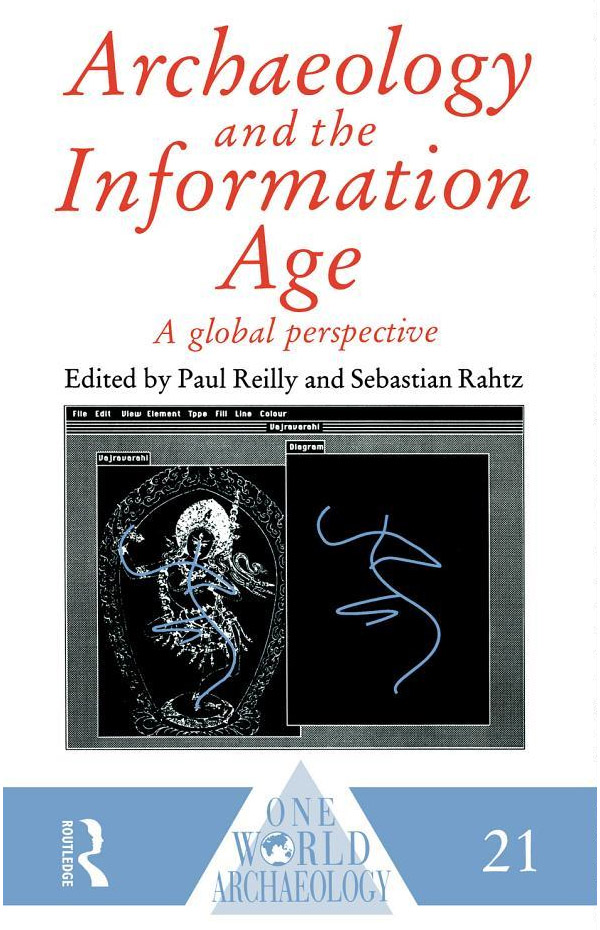
Доступна в кафедральной библиотеке (Е-257)
Книга: Digital archaeology: bridging method and theory
Авторы: Thomas L.Evans & Patrick Daly
Digital archaeology: bridging method and theory/edited by Thomas L.Evans & Patrick Daly. USA: Routledge, 2006 - 238 p.
Index Terms — digital archaeology, archaeology
Аннотация:
Digital Archaeology is a unique edited work addressing the changing and growing role of
digital technologies in all aspects of archaeology and heritage management. Exploring the
wide potential of IT across the discipline, this book goes beyond the prevailing notion
that computers are merely a methodological tool, and considers their influence on the
very nature of archaeological study.
Blending rigorous archaeological theory with the extensive practical knowledge of
professionals in the field, Digital Archaeology is a highly accessible text that shows and
discusses the ways in which computing can be holistically incorporated into archaeology.
The book discusses elements of archaeological theory and reveals how computers can be
used to reintegrate theoretical questions into the application of field work and analysis.
Beginning with a history of the growth of computing within the field, the book goes
on to look at examples of how and why different technologies have been implemented
into archaeological theory and method. It includes GIS, virtual reality modelling, internet
publishing and archiving, and on-site digital recording using such examples as the
integrated digital recording of the Ferrybridge Chariot and other case studies from around
the world. This volume also discusses ways in which technology can now be used in
normal excavations and how this affects the study of archaeology as a whole, from
planning to publication.
Thomas L.Evans is Head of Geomatics for Oxford Archaeology and a Research
Associate at the University of Oxford’s Institute of Archaeology.
Patrick Daly is currently a British Academy Reckitt Travelling Fellow in
Archaeology based at the McDonald Institute of Archaeological Research, University of
Cambridge.
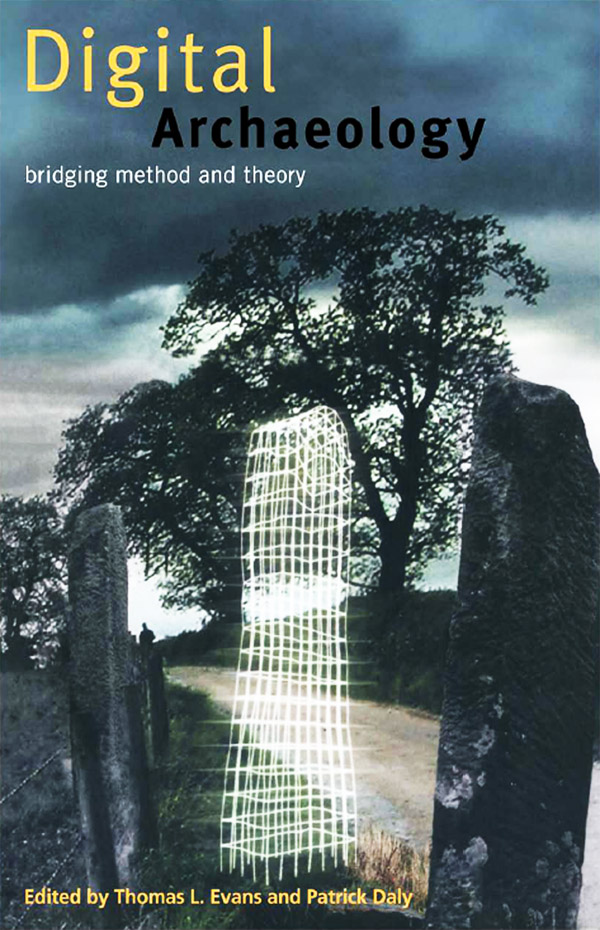
Доступна в кафедральной библиотеке (Е-257)
Книга: Using computers in archaeology: towards virtual pasts
Авторы: Gary Lock
Using computers in archaeology: towards virtual pasts / edited by Gary Lock. London: Routledge, 2003 - 300 p.
Index Terms — digital archaeology, archaeology
Аннотация:
As computing becomes increasingly essential to the work of the archaeologist,
archeologists require a clear understanding of the impact of information technology
upon their discipline.
This non-technical introductory volume discusses and explains the influence of
computers on all aspects of archaeological research and interpretation, from survey,
excavation and landscape to museums, education and communicating the past. The
author meets the need of the archaeologist to keep abreast of how computers can assist
at all stages of archaeological research and data analysis.
Theoretical information, focusing on Geographical Information Systems, for example,
is presented through description of archaeological processes, and is consistently
practical and free from jargon. The author acknowledges the problem of obsolescence in
computing and presents archaeological technology as an on-going, constantly changing
process rather than as a final, achievable state. The book will thus remain relevant
through future advances in technology and informative about the general principles of,
and the issues arising from, the relationship between computers and archaeology.
Highly illustrated and referenced throughout with case-studies and examples, Using
Computers in Archaeology: Towards Virtual Pasts is a timely survey of this increasingly
important area of archaeology, catering for both the student and the experienced
archaeologist.
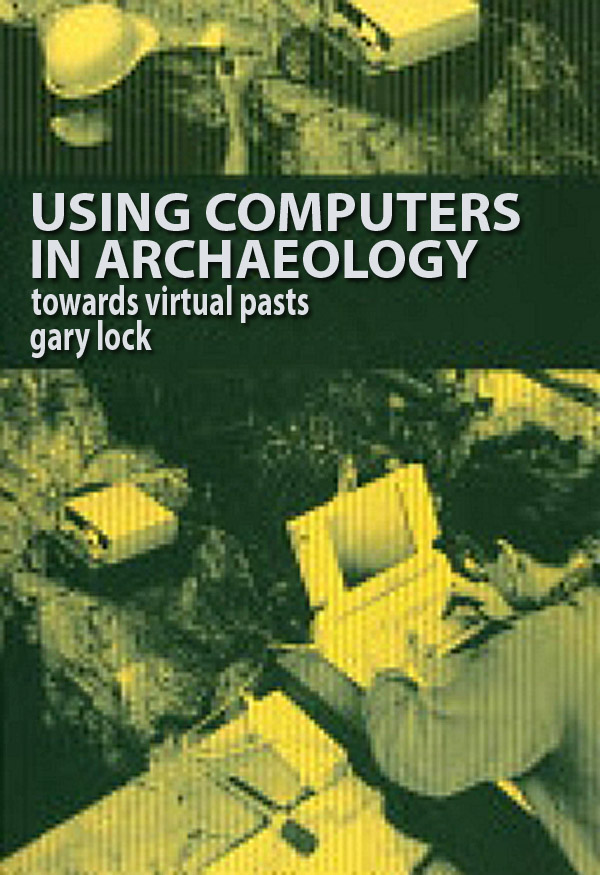
Доступна в кафедральной библиотеке (Е-257)
Книга: E-learning methodologies and computer applications in archaeology
Авторы: Dionysios Politis
E-learning methodologies and computer applications in archaeology / edited by Dionysios Politis. Hershey, New York: Information science reference, 2008 - 466 p.
Index Terms — computer applications in archaeology, E-learning methodologies, digital archaeology, archaeology
Аннотация:
Using the opportunity given under the SOCRATES-MINERVA EU funded project “SEEArchWeb - South
Eastern Europe Archaeology Web: An Interactive Web-based Presentation of Southeastern European
Archaeology,” managed by the multimedia lab, Department of Informatics, Aristotle University of Thessaloniki,
a consortium of prestigious European institutes focused on the implementation of state-of-the
art e-learning strategies for the subject domain of archaeology.
The last few decades have witnessed the rapid growth and development of information and communication
technology (ICT). Due to the application of the new technologies in learning and teaching,
e-learning has emerged as a highly effective teaching tool. E-learning is not simply about transfer of
know-how to a particular field of studies, such as archaeology. It is about enhancing the teaching-learning
process, and therefore requires an in-depth understanding of it.
Archaeology is a multifaceted discipline. Its learning curriculum encompasses a wide range of subject/
period themes and methodological and theoretical approaches, as well as practical experience in the
field. A map of core competencies is needed to transform these perspectives into a well-geared carrier
of instructional events using educational technology. These include, among others, the usage of virtual
reality environments, databases acting as excavation repositories, geographical information systems,
and animated reconstructions.
How can an archaeologist use these diverse tools in a constructive manner? How can an instructor in
archaeology use integrated packages that deliver teaching without becoming a computer scientist? How
can a junior archaeologist take advantage of computer-based training and alter his cognitive paradigm?
All these and other relevant issues are addressed in the chapters that follow, with the aim of enhancing
the existing learning styles.
The motivation for preparing this concise handbook with introductory and interrelated subjects was
given by the 1st SEEArchWeb Conference, “E-learning and Computer Applications in Archaeology,”
that was organised in Thessaloniki on September 29-30, 2006. The new ideas presented in the conference
appear in this collective volume, an opus from the SEEArchWeb experience.
I offer my congratulations to the scholars involved in this consortium, and I hope that this is only
the beginning of a fruitful scientific process that will promote the practice and the teaching of archaeology.
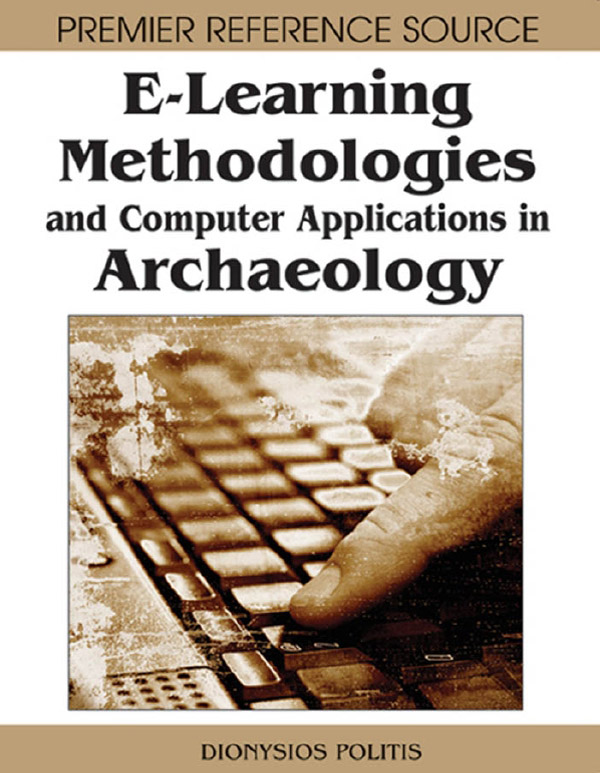
Доступна в кафедральной библиотеке (Е-257)
